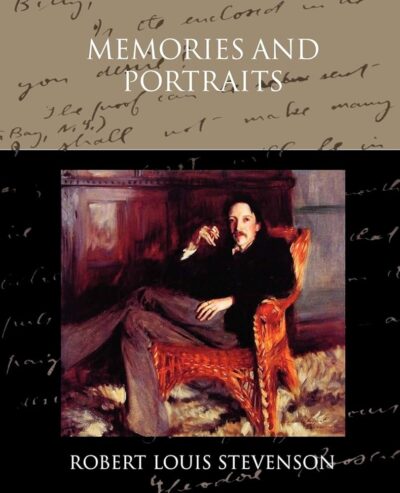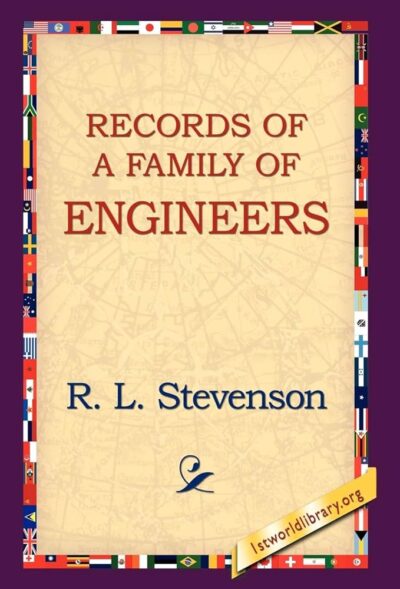410 Results with the "Biography" genre
Adventure Fiction (1001)
Business & Finance (1)
Children's Literature (124)
Comics (6)
Culture (51)
Drama (28)
Dystopian (16)
Fable (86)
Fantasy (1108)
Fantasy (145)
Fiction (921)
Finance (16)
Gothic Fiction (12)
Historical Fiction (437)
History (122)
Horror (55)
Lifestyle (36)
Literary (404)
Literary Fiction (168)
Memoir (167)
Mystery (333)
Non-fiction (97)
Novel (549)
Paranormal Fiction (96)
Philosophical (180)
Philosophy (45)
Poetry (249)
Political Fiction (11)
Politics (41)
Practical (32)
Psychological Thriller (107)
Relationship (5)
Romance Novel (712)
Romantic Melodrama (14)
Satire (91)
Science (55)
Science Fiction (238)
Self-help (64)
Society (65)
Society (2)
Spiritual Growth (1)
story (2)
Thriller (675)
True Crime (55)
view (11)
Women's Fiction (1)
Young Adult (118)
-
 Chapter IX reflects on a life devoted to science and service, tracing the profound yet quiet legacy of Thomas Stevenson, a man whose innovations often lit paths for others more than himself. Though rarely celebrated in the public eye, his name is embedded in engineering history, not just as a builder of lighthouses, but as a visionary who saw safety as a gift worth giving without seeking glory in return. His aversion to self-promotion didn’t diminish his impact; it highlighted a rare commitment to public…
Chapter IX reflects on a life devoted to science and service, tracing the profound yet quiet legacy of Thomas Stevenson, a man whose innovations often lit paths for others more than himself. Though rarely celebrated in the public eye, his name is embedded in engineering history, not just as a builder of lighthouses, but as a visionary who saw safety as a gift worth giving without seeking glory in return. His aversion to self-promotion didn’t diminish his impact; it highlighted a rare commitment to public…-
77.9 K • Ongoing
-
-
 Chapter XIV opens with a quiet meditation on the nature of familiarity found in re-reading. Returning to beloved books resembles revisiting old companions—comforting, revealing, and never quite the same. Each reading draws forth new emotions, revealing how both the reader and the text have subtly changed. Among these enduring friends, The Vicomte de Bragelonne occupies a special place. Although it may not be as critically adored as its predecessors, its richness lies in more mature themes—loyalty aging…
Chapter XIV opens with a quiet meditation on the nature of familiarity found in re-reading. Returning to beloved books resembles revisiting old companions—comforting, revealing, and never quite the same. Each reading draws forth new emotions, revealing how both the reader and the text have subtly changed. Among these enduring friends, The Vicomte de Bragelonne occupies a special place. Although it may not be as critically adored as its predecessors, its richness lies in more mature themes—loyalty aging…-
77.9 K • Ongoing
-
-
Chapter
Chapter XV — A Gossip on Romance
 Chapter XV opens by suggesting that for the romantic reader and writer alike, the joy of fiction lies not in perfect wording but in the vivid feeling it awakens. Words serve merely as the bridge to imagination, and if they succeed in conjuring the desired vision, their elegance becomes secondary. Scott, for instance, often relied less on precision and more on evocation, allowing raw sentiment to lead the scene. His best passages can dazzle with energy, but this brilliance appears intermittently, embedded…
Chapter XV opens by suggesting that for the romantic reader and writer alike, the joy of fiction lies not in perfect wording but in the vivid feeling it awakens. Words serve merely as the bridge to imagination, and if they succeed in conjuring the desired vision, their elegance becomes secondary. Scott, for instance, often relied less on precision and more on evocation, allowing raw sentiment to lead the scene. His best passages can dazzle with energy, but this brilliance appears intermittently, embedded…-
77.9 K • Ongoing
-
-
 Chapter I opens with a thoughtful appraisal of fiction not merely as a genre, but as a living, evolving art form. The views of two distinguished voices—one known for structural precision, the other for accessible charm—serve as the starting point for a broader reflection on what fiction truly represents across all artistic disciplines. Rather than separating fiction from poetry or painting, it is suggested that storytelling forms the backbone of every great artistic expression, whether shaped in words…
Chapter I opens with a thoughtful appraisal of fiction not merely as a genre, but as a living, evolving art form. The views of two distinguished voices—one known for structural precision, the other for accessible charm—serve as the starting point for a broader reflection on what fiction truly represents across all artistic disciplines. Rather than separating fiction from poetry or painting, it is suggested that storytelling forms the backbone of every great artistic expression, whether shaped in words…-
77.9 K • Ongoing
-
-
 Chapter II continues with an exploration into how fiction distills life rather than replicating it. The author insists that while a novel might appear complex on the surface, its strength often lies in its underlying simplicity. Great novels, like great paintings, use clear strokes that sharpen a specific human truth rather than crowding the canvas with every detail of reality. Through focused intention, fiction can illuminate the subtleties of emotion or the weight of circumstance with greater clarity…
Chapter II continues with an exploration into how fiction distills life rather than replicating it. The author insists that while a novel might appear complex on the surface, its strength often lies in its underlying simplicity. Great novels, like great paintings, use clear strokes that sharpen a specific human truth rather than crowding the canvas with every detail of reality. Through focused intention, fiction can illuminate the subtleties of emotion or the weight of circumstance with greater clarity…-
77.9 K • Ongoing
-
-
 Records of a Family of Engineers by George H. B. Ward is a memoir detailing the history and accomplishments of the Ward family, focusing on their contributions to engineering and their involvement in significant projects, while also offering insights into their personal lives and values across generations.
Records of a Family of Engineers by George H. B. Ward is a memoir detailing the history and accomplishments of the Ward family, focusing on their contributions to engineering and their involvement in significant projects, while also offering insights into their personal lives and values across generations.-
4.7 K • Nov 8, '24
-
4.2 K • Nov 8, '24
-
4.2 K • Nov 8, '24
-
-
Chapter
Introduction
 Introduction opens the door to a lineage long woven into the fabric of Scottish history, yet modest in its outward legacy. The Stevenson name, recorded in various forms over the centuries—Stevinstoun, Stevensoun, and others—traces its origins across different regions and historical contexts. By the start of the 18th century, land ownership among those bearing the name had largely disappeared, pointing to a family more grounded in the working and professional classes than in the ranks of Scotland’s…
Introduction opens the door to a lineage long woven into the fabric of Scottish history, yet modest in its outward legacy. The Stevenson name, recorded in various forms over the centuries—Stevinstoun, Stevensoun, and others—traces its origins across different regions and historical contexts. By the start of the 18th century, land ownership among those bearing the name had largely disappeared, pointing to a family more grounded in the working and professional classes than in the ranks of Scotland’s…-
41.1 K • Ongoing
-
-
Chapter
Chapter I Domestic Annals
 Chapter I begins with a lineage rooted in humble beginnings and shaped by enduring resilience. In 1665, James Stevenson, likely working as a tenant farmer, married Jean Keir in Renfrewshire. Their son Robert, born in 1675, later became a maltster, signaling a modest but stable livelihood. As the generations unfolded, another Robert Stevenson—born in 1720 from a second marriage—continued in the same trade, anchoring the family’s economic identity in Glasgow. This continuity of craft and responsibility…
Chapter I begins with a lineage rooted in humble beginnings and shaped by enduring resilience. In 1665, James Stevenson, likely working as a tenant farmer, married Jean Keir in Renfrewshire. Their son Robert, born in 1675, later became a maltster, signaling a modest but stable livelihood. As the generations unfolded, another Robert Stevenson—born in 1720 from a second marriage—continued in the same trade, anchoring the family’s economic identity in Glasgow. This continuity of craft and responsibility…-
41.1 K • Ongoing
-
-
 Chapter I begins with a vivid depiction of the Stevensons’ early engineering endeavors, when Scotland’s coasts were known for their treacherous waters and sparsely marked shorelines. The story opens in a time before lighthouses were common, when the northern seaboard was left largely to the mercy of the sea. The Isle of May, with its ancient beacon, stood almost alone in its role of guiding mariners. Into this landscape stepped Thomas Smith and, eventually, his son-in-law Robert Stevenson, whose lives…
Chapter I begins with a vivid depiction of the Stevensons’ early engineering endeavors, when Scotland’s coasts were known for their treacherous waters and sparsely marked shorelines. The story opens in a time before lighthouses were common, when the northern seaboard was left largely to the mercy of the sea. The Isle of May, with its ancient beacon, stood almost alone in its role of guiding mariners. Into this landscape stepped Thomas Smith and, eventually, his son-in-law Robert Stevenson, whose lives…-
41.1 K • Ongoing
-
-
 Chapter II begins with Robert Stevenson stepping fully into his role as the singular engineer of the Northern Lighthouse Board after parting from his earlier partnership with Thomas Smith. From 1807 onward, Stevenson not only supervised the technical aspects of lighthouse design and construction but also assumed a quasi-familial responsibility for the well-being of the lighthouse staff. Isolated and often stationed far from society, lightkeepers lived in conditions that tested both their discipline and…
Chapter II begins with Robert Stevenson stepping fully into his role as the singular engineer of the Northern Lighthouse Board after parting from his earlier partnership with Thomas Smith. From 1807 onward, Stevenson not only supervised the technical aspects of lighthouse design and construction but also assumed a quasi-familial responsibility for the well-being of the lighthouse staff. Isolated and often stationed far from society, lightkeepers lived in conditions that tested both their discipline and…-
41.1 K • Ongoing
-
- Previous 1 2 3 4 … 6 Next
